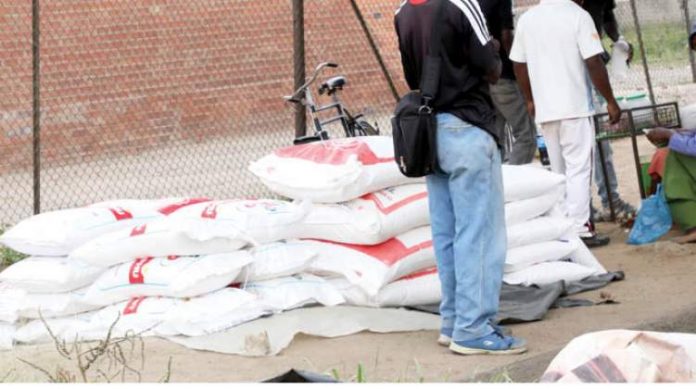The United Nations World Food Programme (WFP) has made an urgent appeal to the international community for US$130 million for food aid for Zimbabwe as the number of the acutely food insecure in the country moves from 3.8 million to 4.3 million people.
In a statement the WFP said that Zimbabwe which was already facing a severe climate and recession-induced hunger crisis now faced the added threat of Coronavirus (COVID-19).
“The United Nations World Food Programme (WFP) urgently needs US$130 million to sustain through August an emergency operation to prevent millions of the country’s most vulnerable people plunging deeper into hunger,” WFP said.
A recent nationwide assessment – the Integrated Food Security Phase Classification (IPC) – showed that the number of acutely food insecure Zimbabweans had risen to 4.3 million, from 3.8 million at the end of last year.
“With most Zimbabweans already struggling to put food on the table, the COVID pandemic risks even wider and deeper desperation,” said Eddie Rowe, WFP’s Country Director.
“We must all do our utmost to prevent this tragedy turning into a catastrophe.”
WFP has in recent months been working to ease hunger in six of nine districts classified late last year as suffering “emergency” food insecurity, allowing them to be downgraded to the less severe “crisis” level.
However, 56 of the country’s 60 districts are now categorised as experiencing “crisis” hunger.
“WFP supports communities afflicted by “crisis” and “emergency” food insecurity. WFP is planning to assist 4.1 million people in April, although insufficient funding has prevented it achieving the same monthly target since the turn of the year,” the statement said.
In March, WFP reached 3.7 million of the most vulnerable Zimbabweans. The total number of food insecure people stands at 7.7 million which is more than half the population.
The US$130 million being urgently sought by WFP is part of a total food assistance requirement of US$472 million through December. Cereal production in 2019 was half that of 2018, and less than half the national requirement.
Experts predict that the upcoming 2020 harvest will be even poorer. Most of Zimbabwe’s food is produced by subsistence farmers dependent on a single, increasingly unreliable rainy season.
With unprecedented hyperinflation having pushed the prices of staples beyond the means of most Zimbabweans, increasingly desperate families are eating less, selling off precious belongings and going into debt.
COVID-19 threatens to exacerbate Zimbabwe’s dire economic and hunger crises, drastically affecting the lives of people in both urban and rural areas.
WFP said it had a critical role to play by sustaining its scaled-up food assistance programme while supporting the country’s response to the pandemic.
“It (WFP) is pre-positioning three months of food and cash assistance, rolling out new risk-control measures at distributions – increasing their number to prevent overcrowding, initiating handwashing and monitored social distancing – and launching a communications campaign to convey essential health and safety information,” WFP said.
Zimbabwe has to date recorded 11 COVID-19 cases with three deaths.













